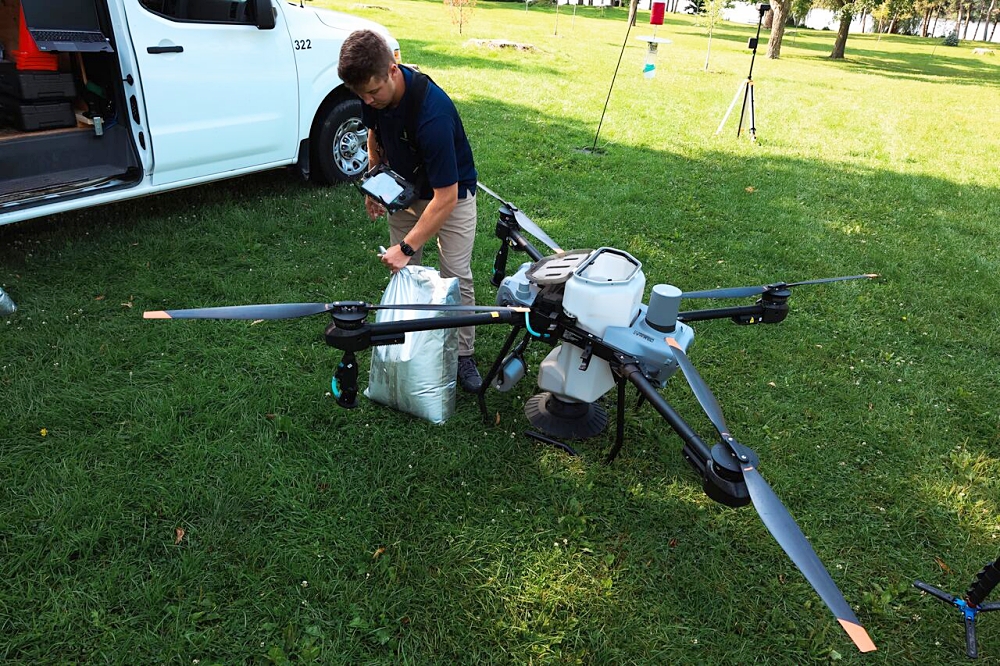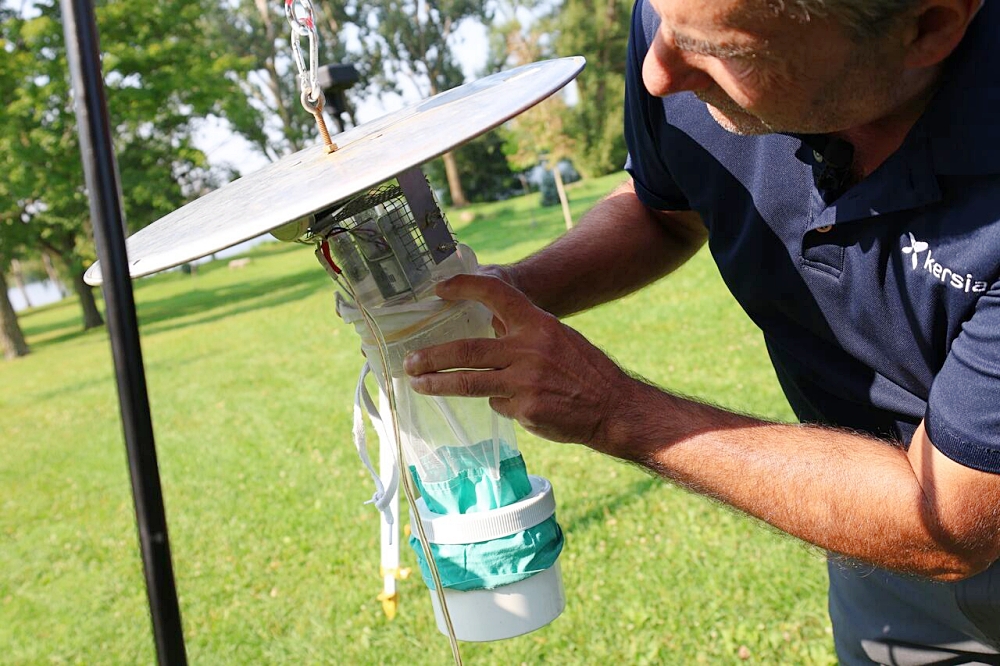The Ottawa Public Health (OPH) agency is deploying drones capable of carrying and dispersing larvicides to kill mosquitoes. The technology is supplied and operated by GDG Environment. Richard Trudel, a scientific adviser for the company, says bigger areas require bigger drones.
The company’s larger drone is capable of spreading larvicide in a six-metre radius, and can reach areas that would typically would be difficult to access.
“It’s really sophisticated, it’s very efficient. It’s meant to blow product down and put it in the right place,” said Trudel.
Killing mosquito larvae isn’t the only thing the program is doing to prevent spread of the virus. It’s also testing the insects to identify where the virus may be present. So far this year, five groups of mosquitoes and one person have tested positive.

A drone filled with larvicides is prepped for a demo flight at Mooney’s Bay in Ottawa – Jocelyn Shepel/CBC
West Nile virus is primarily spread by the northern house mosquito. Only a small number of people bitten by a mosquito carrying the virus will become infected.
About 20 per cent of those infected may experience flu-like symptoms, including fever, headache, muscle aches and rashes.
Severe illness occurs in less than one per cent of infections; the virus can affect the central nervous system. The risk of severe illness increases with age and is also higher among people with weakened immune systems, says OPH.
Covering Land and Sky
The OPH is also monitoring mosquito populations on the ground.
Allyson Hopkin, a third-year biology student doing a co-op with the OPH, is helping to treat residential areas by bike. Her bike is equipped with a pesticide dispensing device and a paint-spraying attachment that leaves marks so that staff can keep track of which storm drains have been treated.
OPH public health inspector and West Nile virus program lead Alison Samuel said the larvicide used is safe for pets and humans, and for the bodies of water that are treated.
“I don’t want to get too technical, but VectoLex, Methoprene and BTI, these are products that have been approved by MCP, the Ministry of Environment, and they are known to be environmentally friendly,” said Samuel.

Trudel holds a trap that allows officials to monitor mosquito populations and test them for the virus – Jocelyn Shepel/CBC
There are a number of things people can do to protect themselves: using insect repellent, wearing long pants and long shirt sleeves, and avoiding being outside during the dusk and dawn hours.
“They can make sure that there’s no standing water because mosquitoes need water to breed. So even as simple as, you know, a dog bowl or garbage cans or recycle bins, things like that, anything that can hold water,” Samuel said.
Mosquitoes can make going outside an ordeal, said Ottawa resident Toufik Serhan. His wife agrees it’s a problem and showed the bites she has received.
Serhan said they worry about their children because they’ve had bad reactions.
He said that when one of his children was bitten,
“it was like an elephant ear at that time so we had to take them to the hospital and then they got antibiotics.”
As part of the programs plan to prevent the spread of West Nile virus, GDG will apply larvicide by request to residents’ private catch basins alongside the usual work of treating city-owned stormwater management ponds and roadside storm-sewer catch basins.
“So hopefully they continue the spraying and looking after us and in my area and all different places here so we can live peacefully with the mosquitoes,” said Serhan.
Top Photo: One of the GDG Environment drones in flight – Jocelyn Shepel/CBC
Source: CBC

